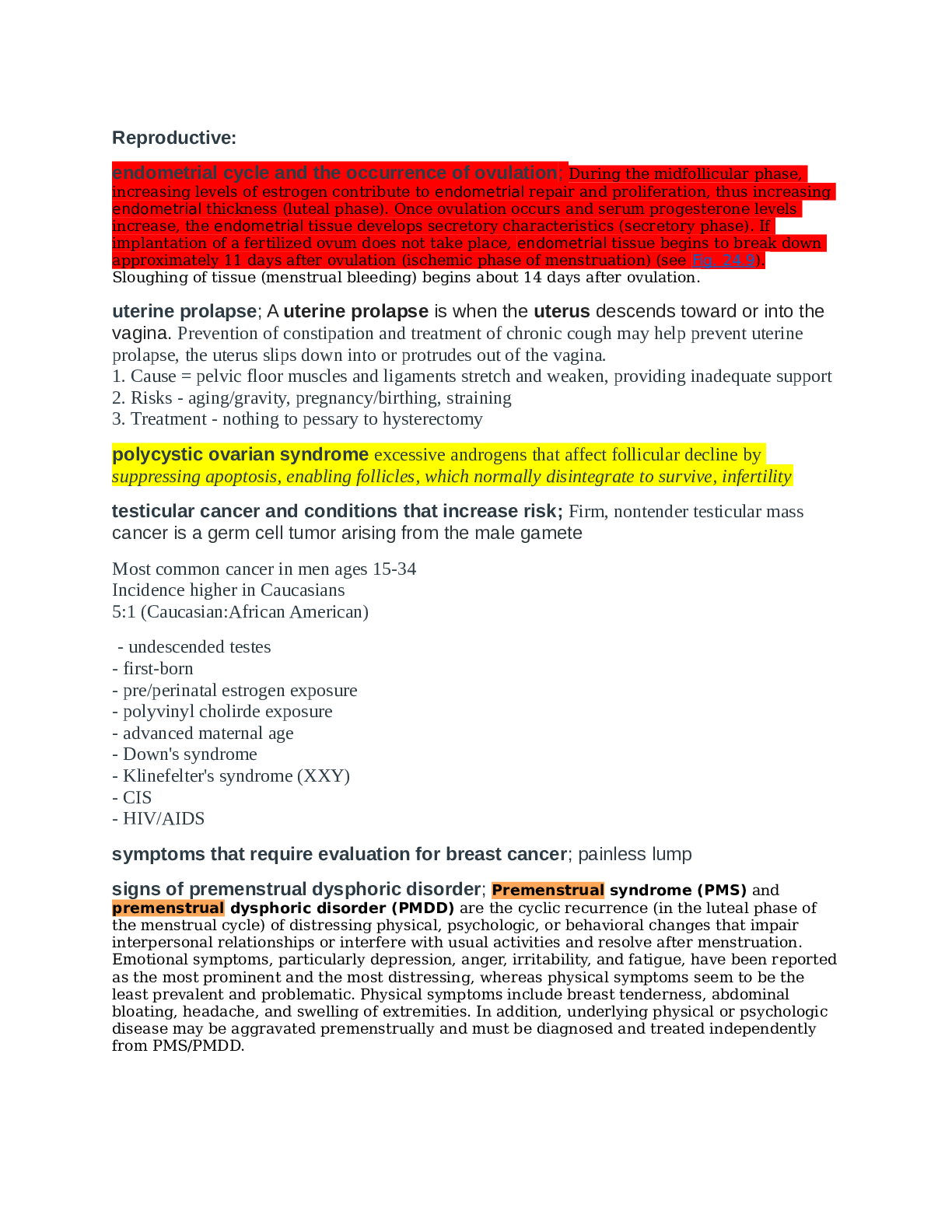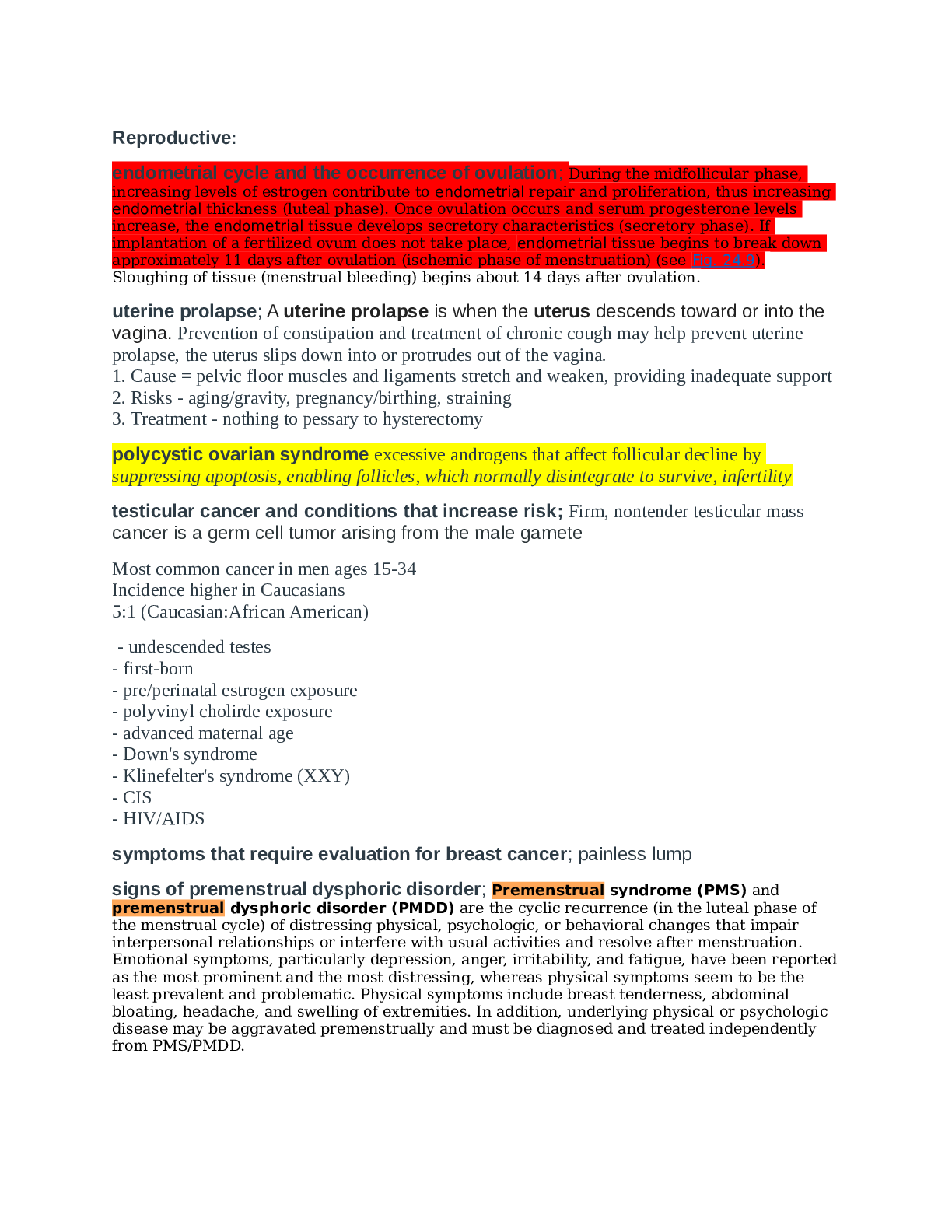Reproductive:
endometrial cycle and the occurrence of ovulation; During the midfollicular phase,
increasing levels of estrogen contribute to endometrial repair and proliferation, thus increasing
endometrial thickness (luteal phase). Once ovulation occurs and serum progesterone levels
increase, the endometrial tissue develops secretory characteristics (secretory phase). If
implantation of a fertilized ovum does not take place, endometrial tissue begins to break down
approximately 11 days after ovulation (ischemic phase of menstruation) (see Fig. 24.9).
Sloughing of tissue (menstrual bleeding) begins about 14 days after ovulation.
uterine prolapse; A uterine prolapse is when the uterus descends toward or into the
vagina. Prevention of constipation and treatment of chronic cough may help prevent uterine
prolapse, the uterus slips down into or protrudes out of the vagina.
1. Cause = pelvic floor muscles and ligaments stretch and weaken, providing inadequate support
2. Risks - aging/gravity, pregnancy/birthing, straining
3. Treatment - nothing to pessary to hysterectomy
polycystic ovarian syndrome excessive androgens that affect follicular decline by
suppressing apoptosis, enabling follicles, which normally disintegrate to survive, infertility
testicular cancer and conditions that increase risk; Firm, nontender testicular mass
cancer is a germ cell tumor arising from the male gamete
Most common cancer in men ages 15-34
Incidence higher in Caucasians
5:1 (Caucasian:African American)
- undescended testes
- first-born
- pre/perinatal estrogen exposure
- polyvinyl cholirde exposure
- advanced maternal age
- Down's syndrome
- Klinefelter's syndrome (XXY)
- CIS
- HIV/AIDS
symptoms that require evaluation for breast cancer; painless lump
signs of premenstrual dysphoric disorder; Premenstrual syndrome (PMS) and
premenstrual dysphoric disorder (PMDD) are the cyclic recurrence (in the luteal phase of
the menstrual cycle) of distressing physical, psychologic, or behavioral changes that impair
interpersonal relationships or interfere with usual activities and resolve after menstruation.
Emotional symptoms, particularly depression, anger, irritability, and fatigue, have been reported
as the most prominent and the most distressing, whereas physical symptoms seem to be the
least prevalent and problematic. Physical symptoms include breast tenderness, abdominal
bloating, headache, and swelling of extremities. In addition, underlying physical or psychologic
disease may be aggravated premenstrually and must be diagnosed and treated independently
from PMS/PMDD.
Read More


